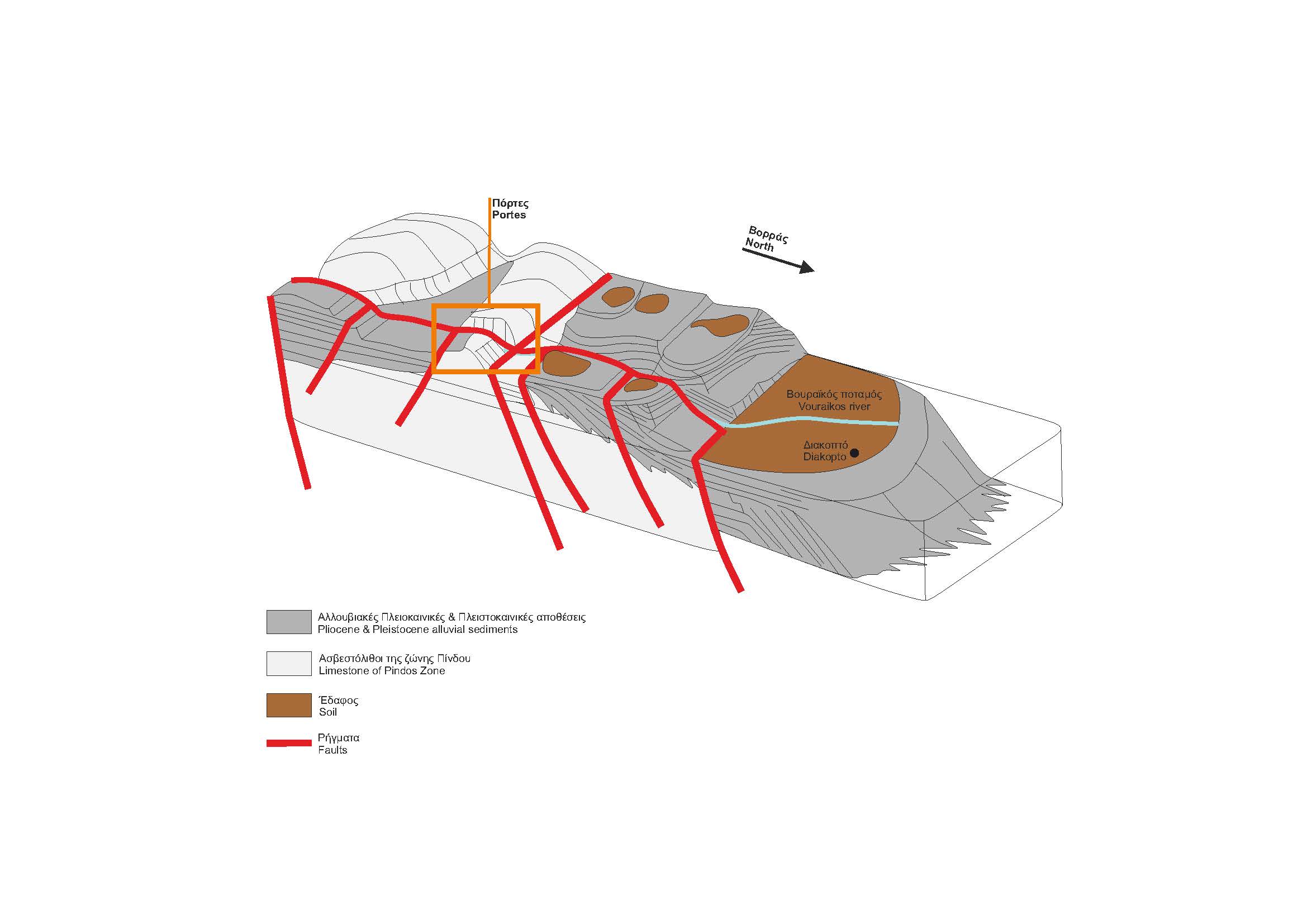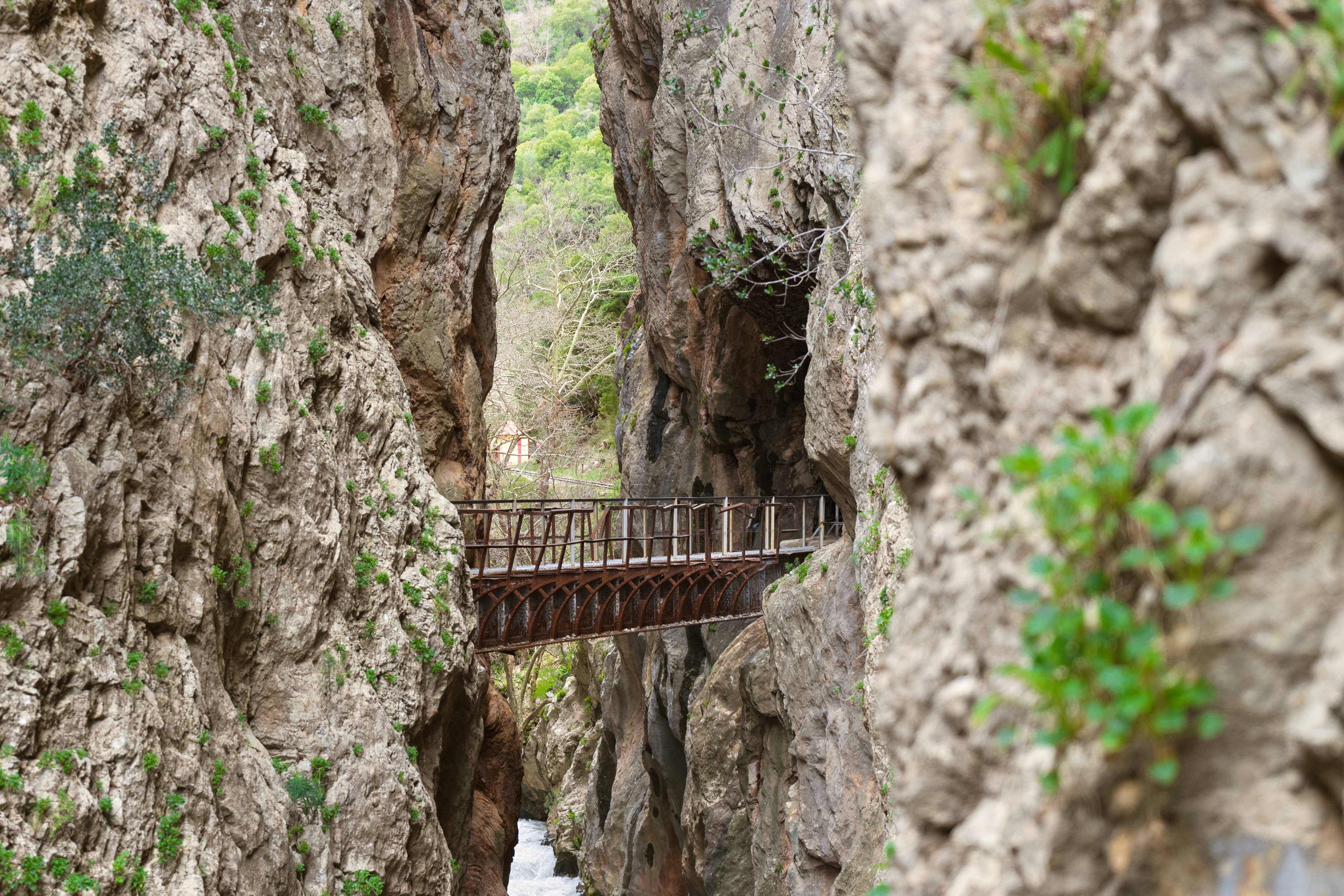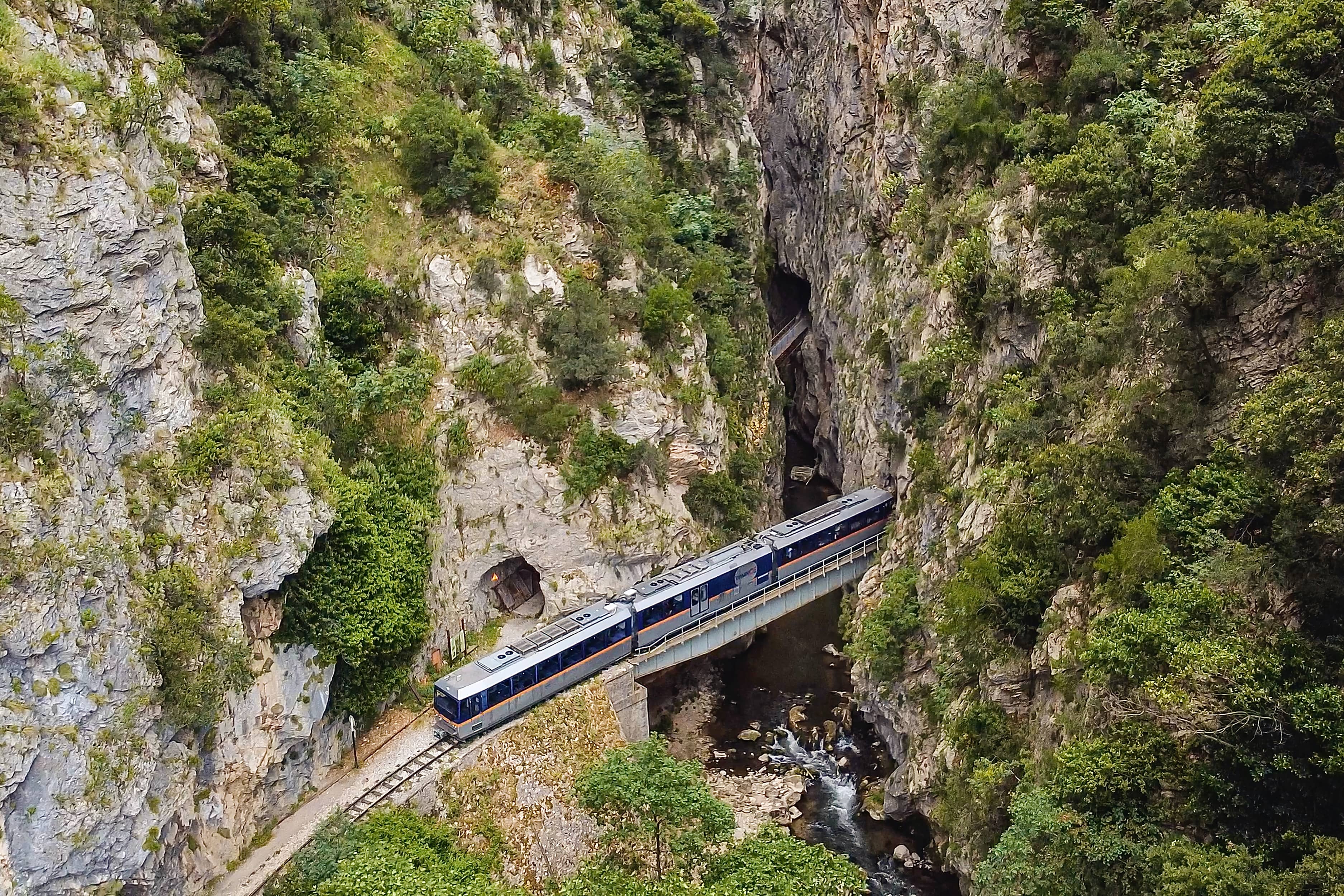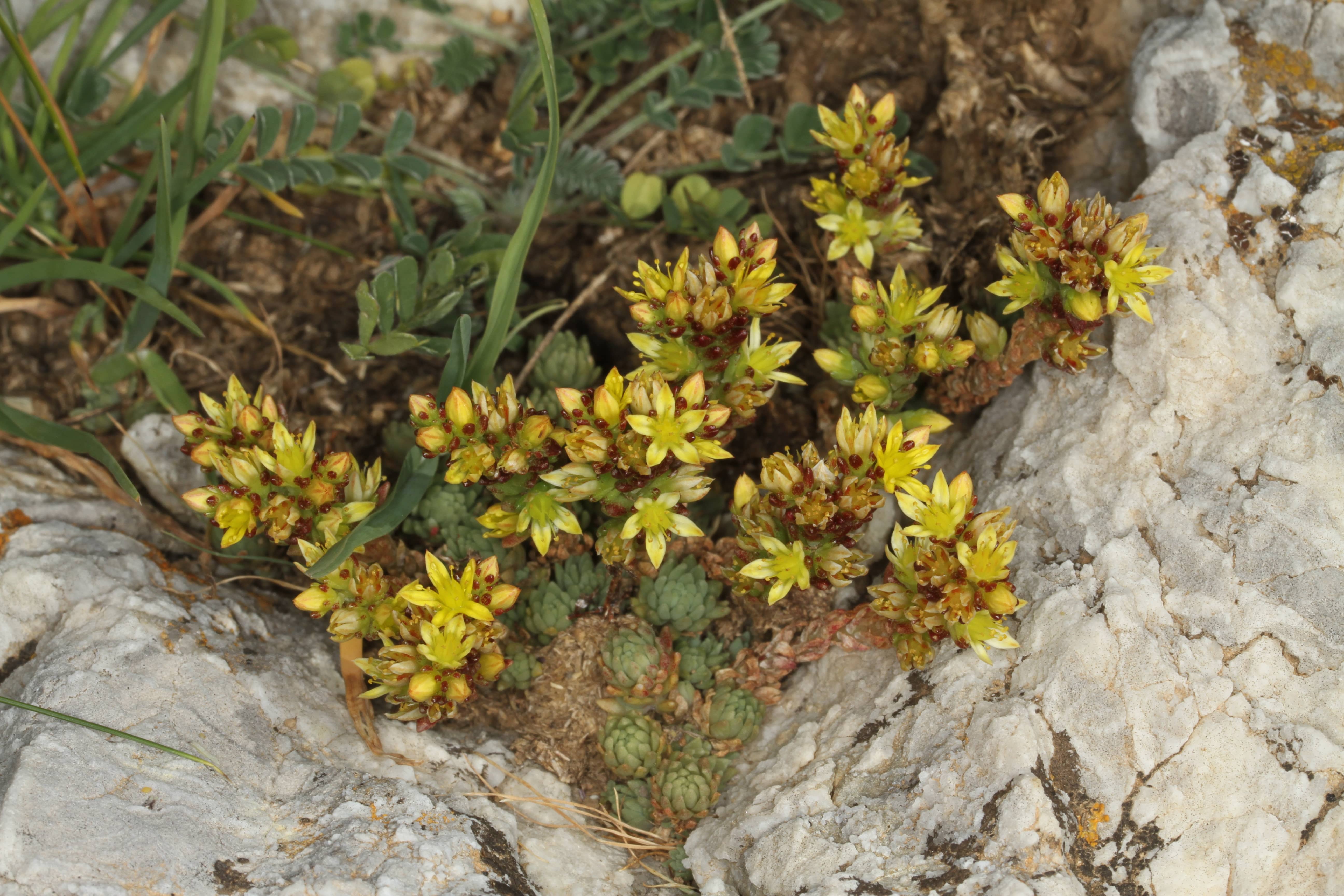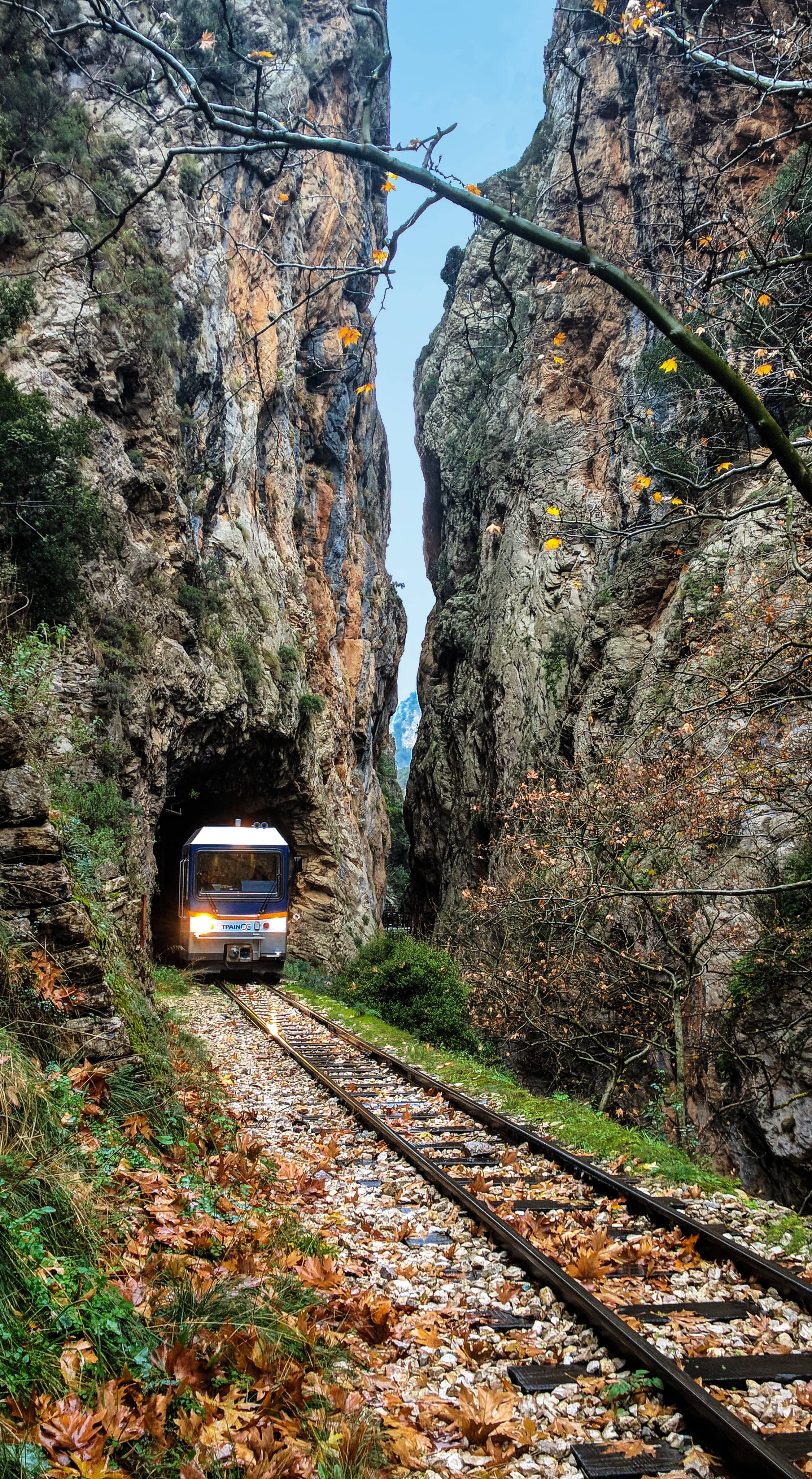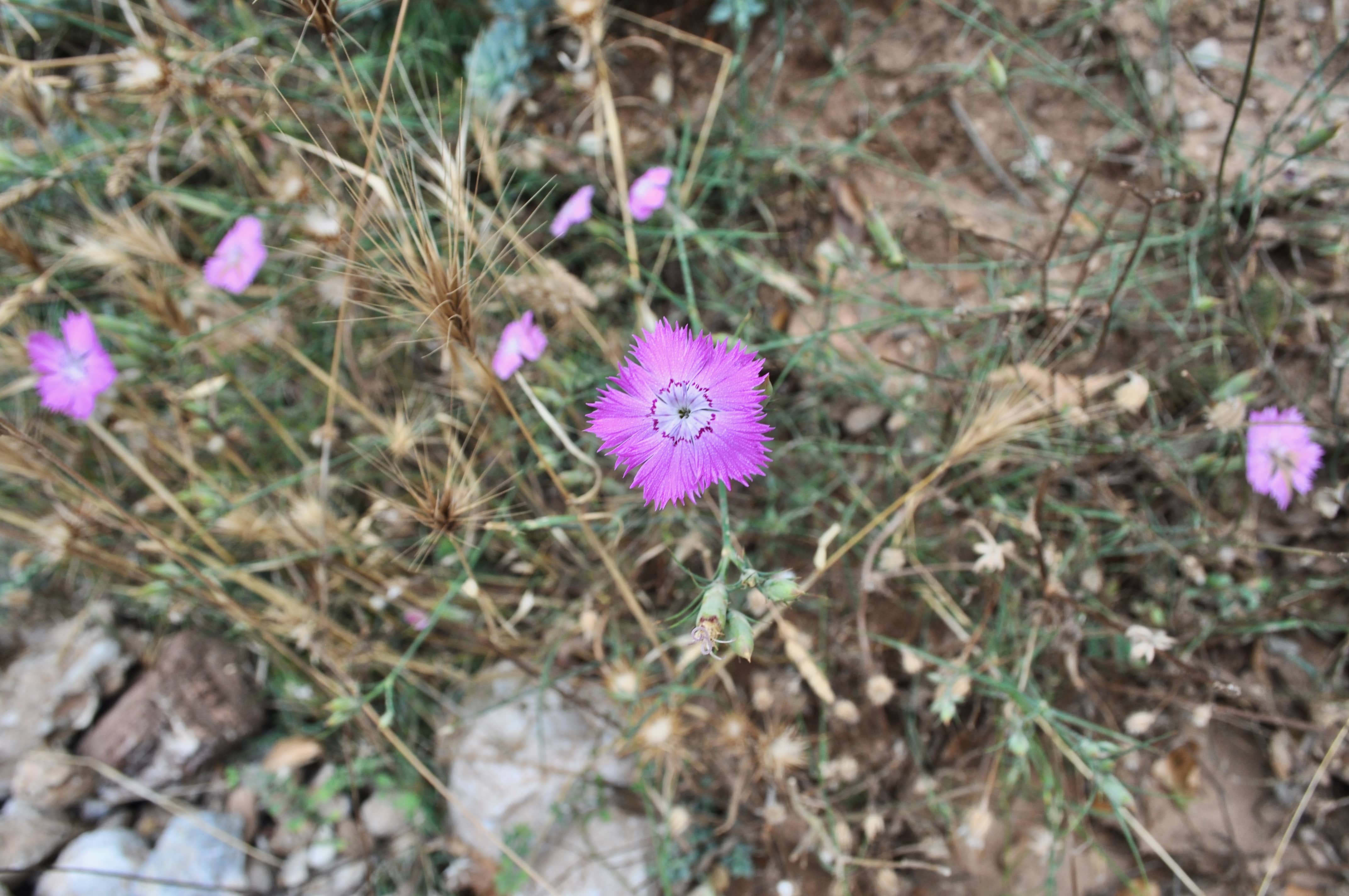CUT BY HERCULES SWORD
Portes- Triklia geosite, is the narrowest and deepest part of the Vouraikos gorge. For over a hundred and twenty years the water route from Kalavryta to Diakopto, has been accompanied by the racked railway. At Portes geosite there is a tunnel at the entrance of which two huge iron doors were used to prevent the passage of people that wanted to hike the canyon along the railtracks of the racked railway.
Geodiversity
The dominant rocks of the area are white limestones (carbonate rocks, which are easily eroded by the action of water) formed in a deep sea (Pindos Ocean) about 100-66 million years ago and cemented conglomerates (rounded rock fragments) transported by rivers and deposited in the area about 2.588- 1.0 million years ago.
This geosite was formed by the special tectonic conditions that prevail in the wider area due to the expansion of the Gulf of Corinth. The Corinth gulf is the most seismically active area in Europe, having been active for the last 5 million years, with an expansion rate of 10-15 mm per year. This expansion causes the formation of multiple faults, which results in the subsidence of the Gulf area and the continuous uplift in the areas of Northern Peloponnese such as the Vouraikos gorge area. This uplift along the Portes-Triklia area, combined with the continuous deep erosive action of the water of the Vouraikos river, created this impressive geomorph.
Biodiversity
The Geosite is located within the Protected Area “FARAGI VOURAIKOU” (GR2320003) and the Special Protection Area (SPA) for avifauna “OROS CHELMOS (AROANIA)-FARANGI VOURAIKOU KAI PERIOCHI KALAVRYTON” (GR2320013) of the Natura 2000 network.Dianthus mercurii, a local endemic species of N. Peloponnese, can be found in the area. Very important for the wild flora of the area are the steep conglomerate slopes. As we cross the gorge we meet a significant number of Peloponnesian endemic species, such as Asperula arcadiensis etc., but also a large number of Greek endemic species such as Helianthemum hymettium etc. There are also some important species of lepidoptera such as the moth Callimorpha quadripunctaria and the butterfly Papilio alexanor, which are protected according to Council Directive 92/43/EEC.

